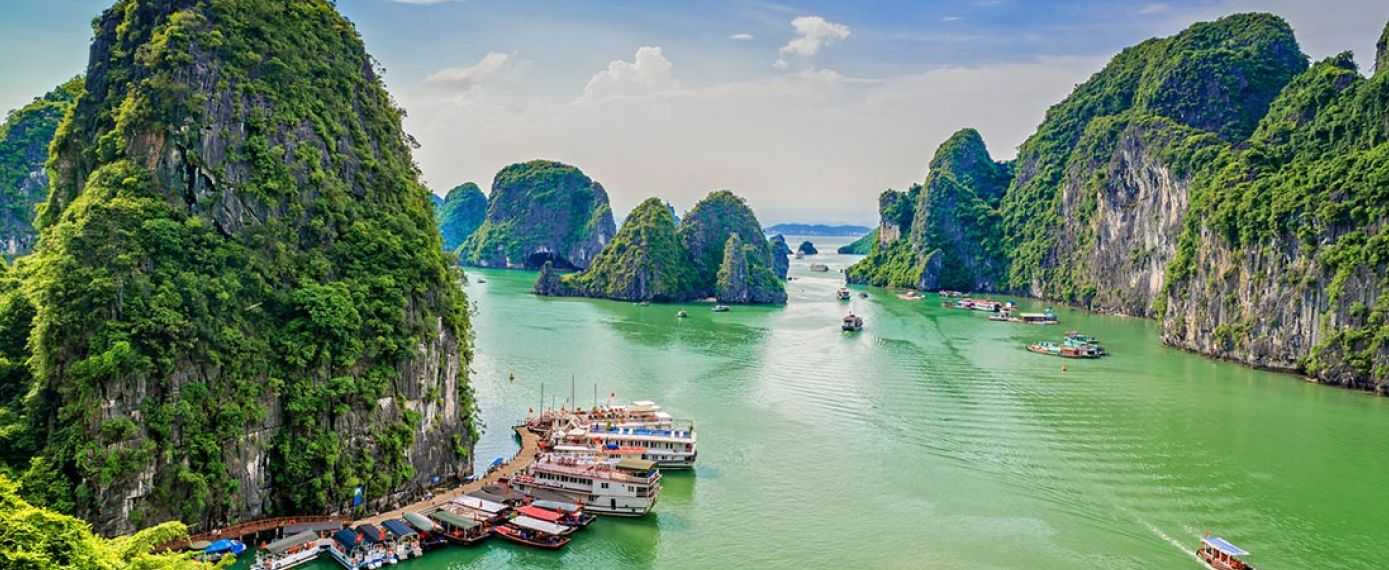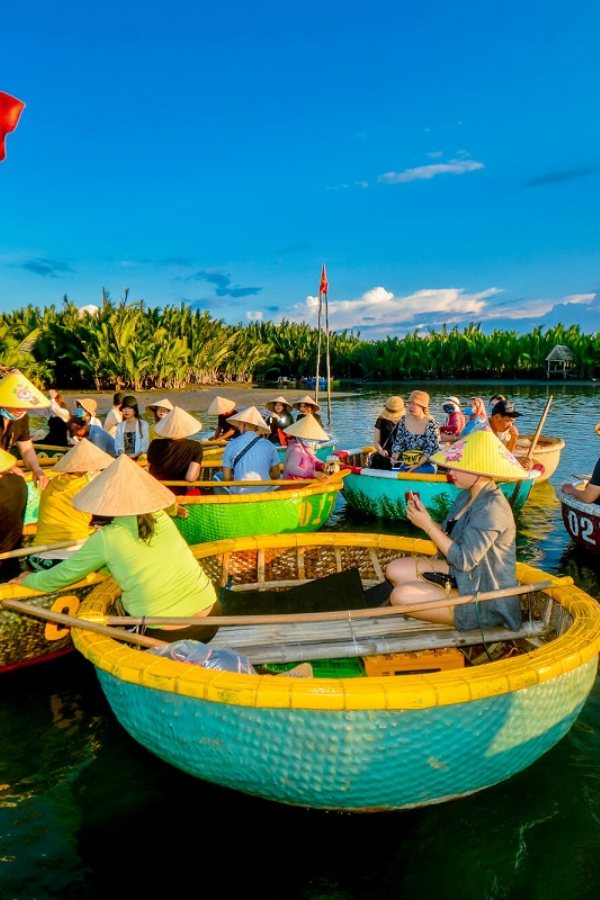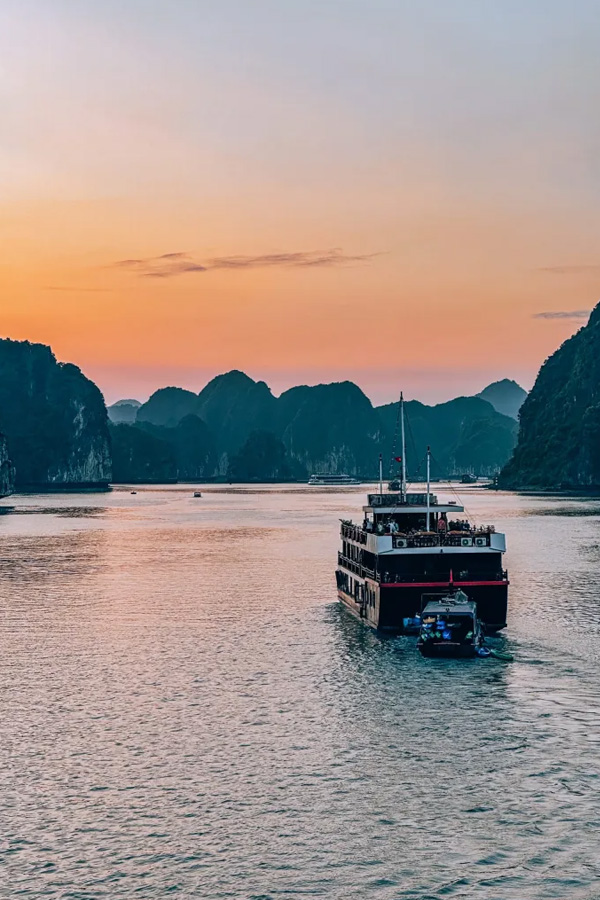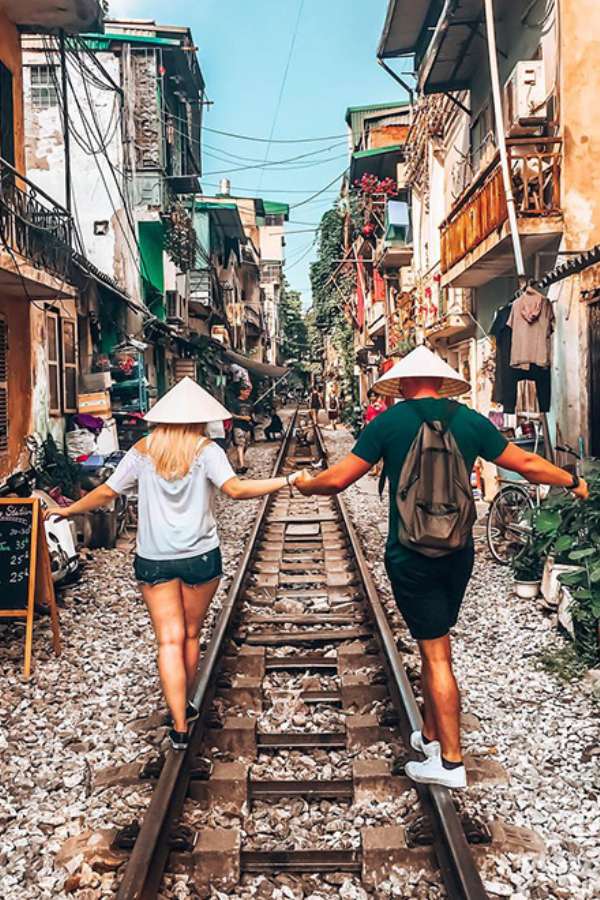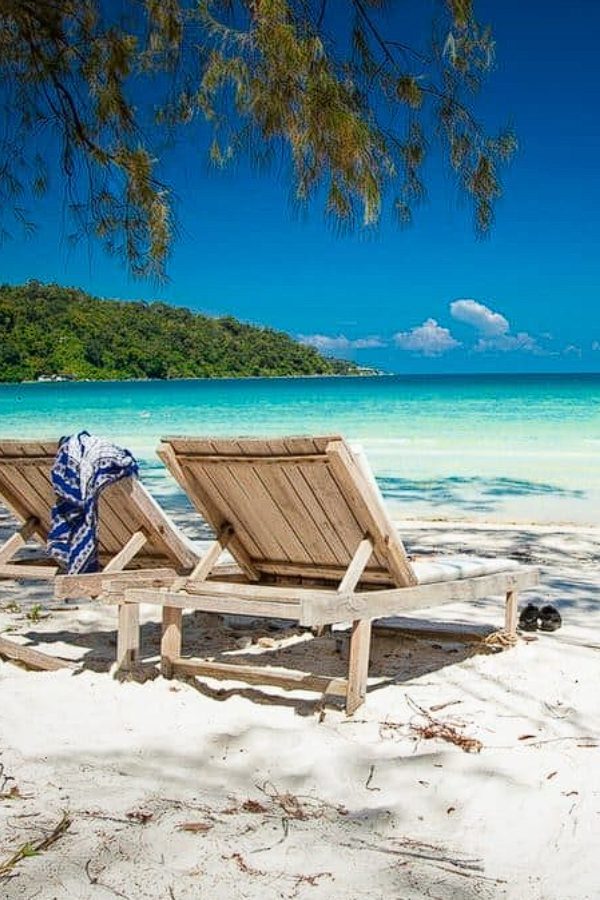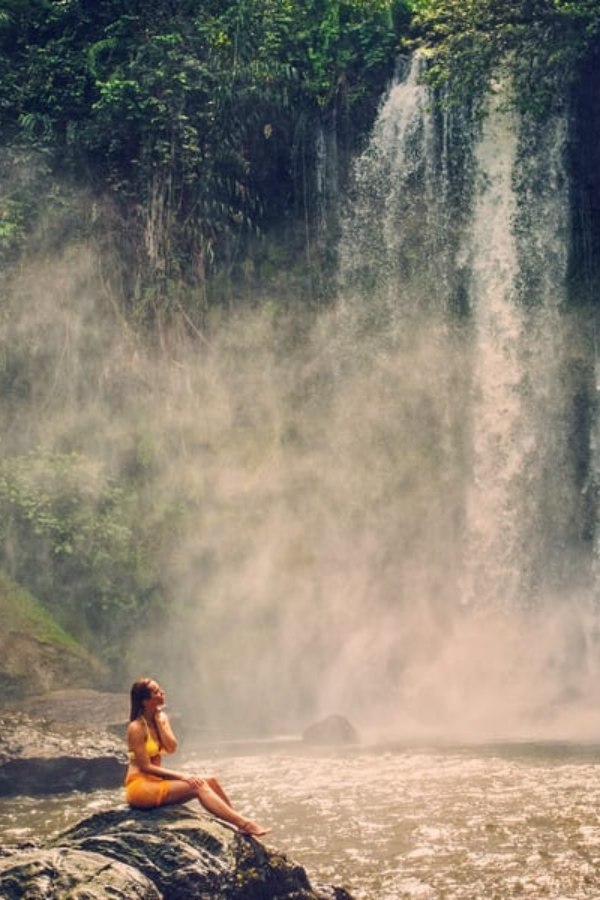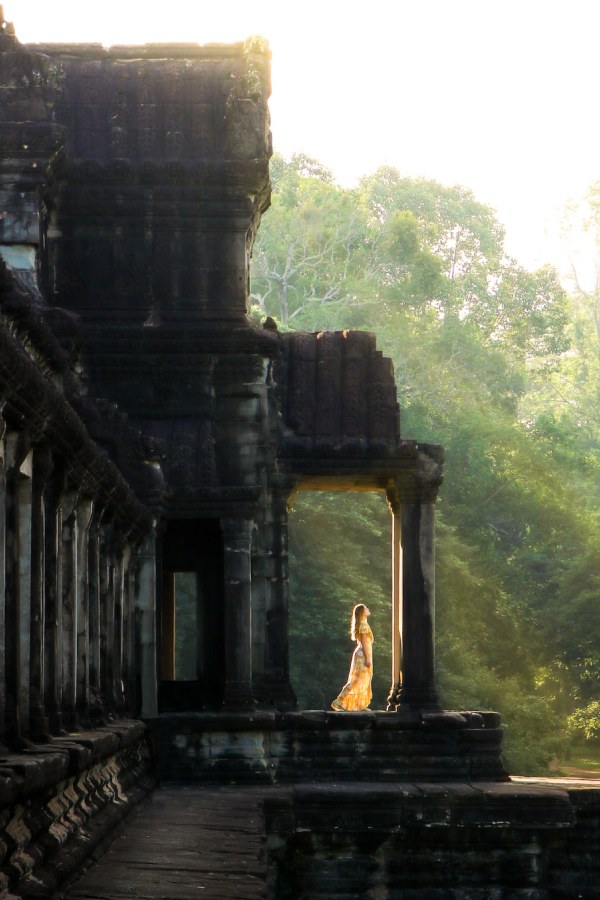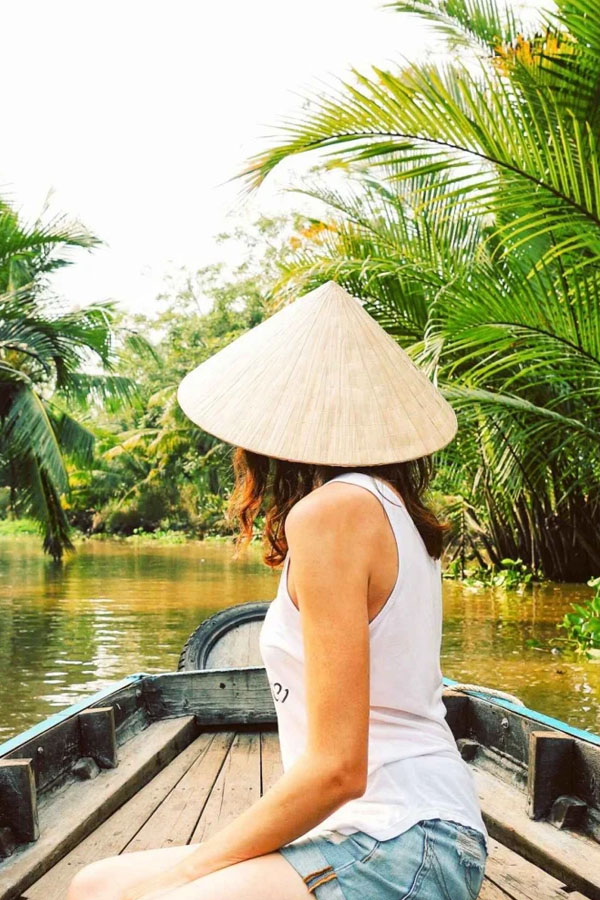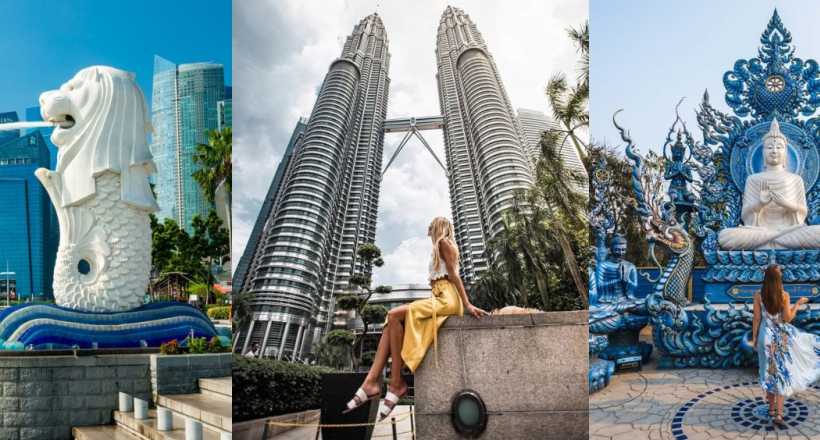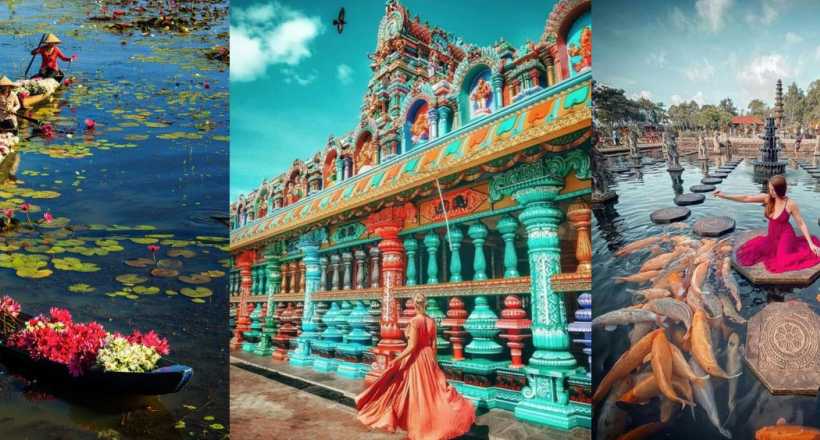
Embark on a fantastic 15-day journey through Vietnam and Cambodia, exploring the region’s most captivating destinations. Start in Hanoi, Vietnam’s vibrant capital, where you will weave through the historic Old Quarter on a cyclo before embarking on a breathtaking cruise through iconic Halong Bay. Next, head to Central Vietnam, where you will cycle through picturesque rural villages and enjoy fun moments in the enchanting water coconut forest. Then experience the vibrant energy of Ho Chi Minh City, spending two nights soaking up the city's modern charm after a scenic day trip to the floating markets of the Mekong Delta. Beyond Vietnam, your adventure will extend to Cambodia’s must-see treasures, Siem Reap and Sihanoukville. Admire the awe-inspiring Angkor Wat, a UNESCO-listed wonder, and relax on Sihanoukville's pristine beaches, where the clear waters invite relaxation and serenity.
Embark on a fantastic 15-day journey through Vietnam and Cambodia, exploring the region’s most captivating destinations. Start in Hanoi, Vietnam’s vibrant capital, where you will weave through the historic Old Quarter on a cyclo before embarking on a breathtaking cruise through iconic Halong Bay. Next, head to Central Vietnam, where you will cycle through picturesque rural villages and enjoy fun moments in the enchanting water coconut forest. Then experience the vibrant energy of Ho Chi Minh City, spending two nights soaking up the city's modern charm after a scenic day trip to the floating markets of the Mekong Delta. Beyond Vietnam, your adventure will extend to Cambodia’s must-see treasures, Siem Reap and Sihanoukville. Admire the awe-inspiring Angkor Wat, a UNESCO-listed wonder, and relax on Sihanoukville's pristine beaches, where the clear waters invite relaxation and serenity.
Read more ...
Highlights of this Tour
Our tour includes
Stay at
Hotel(13 nights), Cruise(1 night)
Read more...Transfers
Travel by private & shared vehicle with driver according to daily schedule
Read more...Local Team
Private guides, drivers, your own travel expert
Read more...Meals
Daily scheduled meals including breakfast at hotel and lunch at local restaurant
Read more...Activities
18 Interesting Experiences
Read more...Services
In-tour offerings including entrance fees, boat trips, in-tour flights...
Read more...Stay at
Hotel(13 nights), Cruise(1 night)
Read more...Transfers
Travel by private & shared vehicle with driver according to daily schedule
Read more...Local Team
Private guides, drivers, your own travel expert
Read more...Meals
Daily scheduled meals including breakfast at hotel and lunch at local restaurant
Read more...Activities
18 Interesting Experiences
Read more...Services
In-tour offerings including entrance fees, boat trips, in-tour flights...
Read more...Trip Overview
Vietnam & Cambodia: A Spectacular Adventure - 15 days
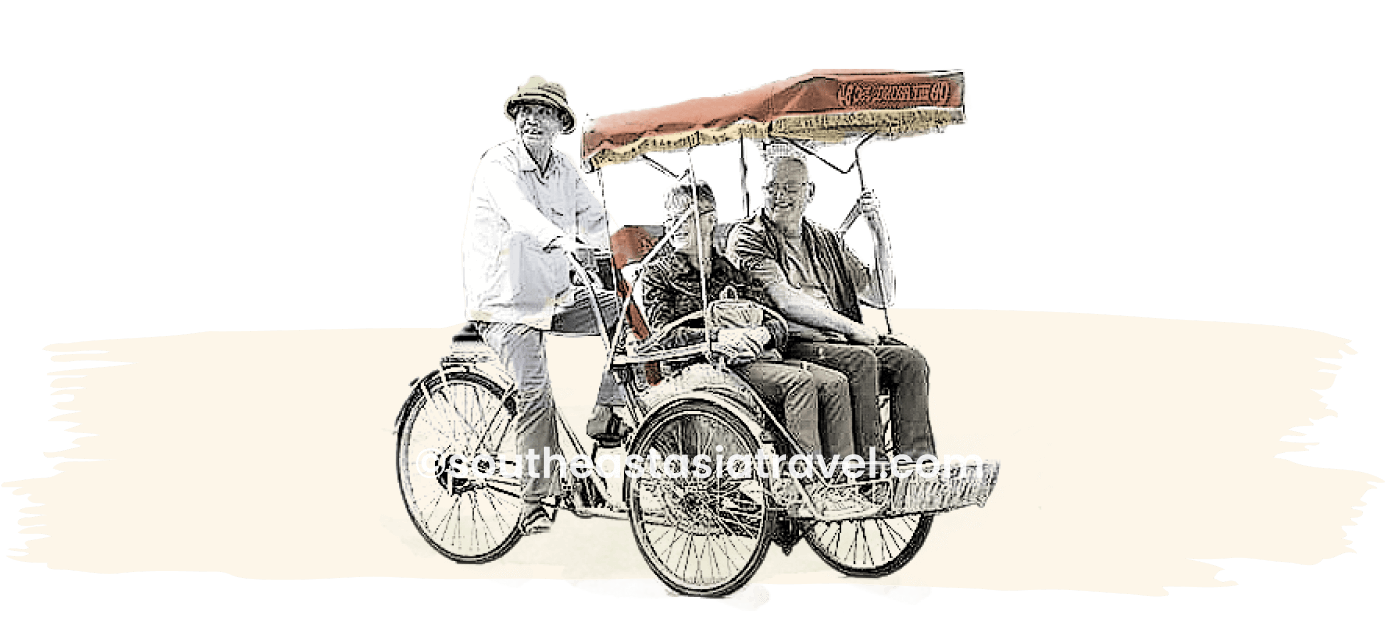
Hanoi
Halong Bay
Hoi An
Ho Chi Minh
Mekong
Siem Reap
Sihanoukville
Phnom Penh

With over 15 years of experience, our team will help you choose the perfect for your adventure.

Authentic

Flexible

Persionalized

24/7 Support


Destinations of this tour
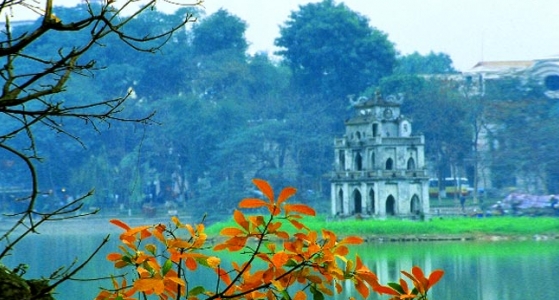
Perched on the banks of the Red River, Hanoi is Vietnam's capital and one of the world's most ancient cities. Its beauty lies in its liveliness of bustling streets where workshops and cafes spill out onto the streets and roadsides. As the intersection point where east meets west, Hanoi is a fascinating mix of old and new, Asian and European. With Chinese and French influences, an ancient culture, colonial architecture, broad tree-lined boulevards and beautiful lakes, the iconic architectural appearance of the Old Quarter and the elegance of the French Quarter, Ho Chi Minh’s Mausoleum and the Temple of Literature, etc... gives Vietnam’s capital city a unique charm of the ancient and modern. Hanoi is also home to one of Asia’s strong indigenous culinary traditions, with bustling wet markets and a rowdy street-food culture, as well as some five star international dining options. It is also very affordable by urban Asian standards, with the majority of hotels and restaurants offering plenty of value.
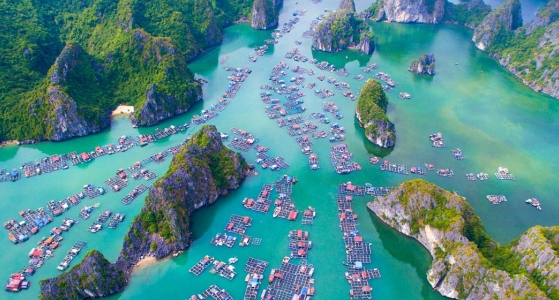
Halong Bay, listed as a UNESCO World Heritage Site in 1994, is located 170km east of Hanoi. It is made up of three neighboring bays: Halong, Lan Ha and Bai Tu Long bays, although Halong Bay is undeniably the most famous and most well-known of the three. Widely considered a natural wonder of the world, the UNESCO World Heritage Site is breathtaking with thousands of majestic limestone, peaks and islets rising dramatically out of the sparkling emerald waters of the bay. The most common way to explore is by taking an overnight night cruise or day-trip which cruises among the limestone pillars and islets. Many also include an island drop off and cave explorations. Visiting floating villages in the area gives a chance to interact with the local community whose livelihoods depend on the waters. Another way to immerse oneself close up in the bay is by kayaking near and around the limestone pillars and some of the caves that are possible to enter by kayak.
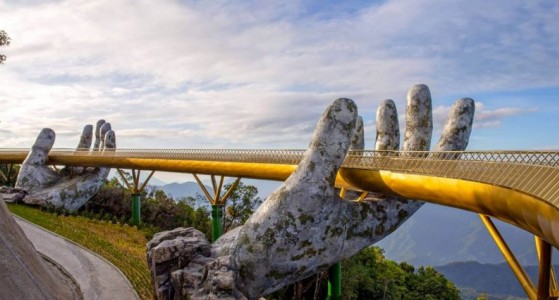
Da Nang is the commercial and educational center of central Vietnam and the largest city in the region. It is also the tourism hub on the west coast blessed with beautiful sunsets against a backdrop of lush mountains. This port city on the South China Sea has large areas of soft, ivory-white sand and clear blue waters making it an ideal place for a beach vacation and outdoor activities such as surfing, snorkeling, kayaking and jet-skiing. Da Nang is in easy reach of several UNESCO World Heritage Sites such as Hoi An ancient town, Hue and the My Son Sanctuary.
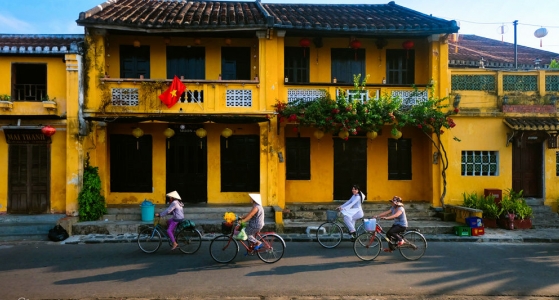
One of the oldest cities in Asia, Hoi An town is in central Vietnam and was declared a UNESCO World Heritage Site in 1999 thanks to its 800 historic buildings. Today, its iconic yellow ochre facades, a quaint riverfront promenade, pedestrian-friendly streets, and hundreds of colorful lanterns that light up the town every evening are a magnet for local and international visitors. Due to extremely well-preserved heritage architecture, Hoi An has an irresistible charm. The Japanese merchant houses, congregation halls of the former Chinese communities and even the warehouses hold the memory of where and when traders from various communities across Asia gathered. Hoi An is one of Vietnam’s most favorite destinations with something for every one. A quaint town perfect for strolling, shopping, and dining; awesome beaches and a perfect mix of countryside and villages which can be explored by bicycle or motorbike.
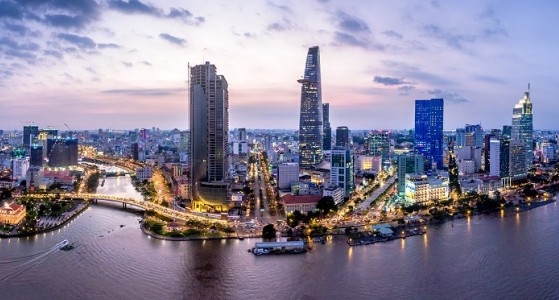
Commonly known as Saigon, Ho Chi Minh City in southern Vietnam is the country’s largest city and the financial and economical capital. This is a city full of surprises. Chaotic traffic blends with peaceful pagodas, parks, multi-style coffee shops and whole neighborhoods hidden down tiny alleyways. Icons of the past endure in the middle of the city’s vast urbanization. The ornate Saigon opera house, Hôtel de Ville - former French city hall, broad boulevards leading to the Saigon River and the gracious stucco villas are reminders of French-colonial times. In addition, the Chinese influence is also evident particularly in Cholon district (the city's Chinatown), while modern skyscrapers and international hotel chains that dot the skyline symbolize Vietnam's fixation on the future.
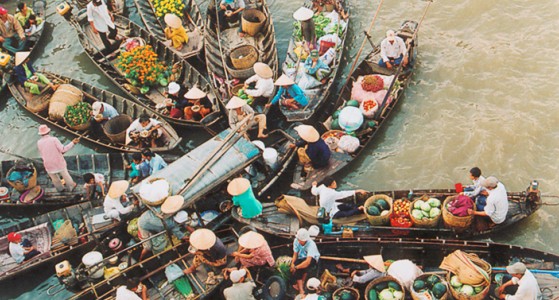
The Mekong Delta, located in the southernmost territory bordered by Cambodia, is the most fertile land in Vietnam. This is a region of unrelenting beauty - nicknamed the 'rice bowl' of Vietnam, where over 50% of Vietnam’s rice is grown. It is home to a unique ecosystem with diverse communities and ethnicities, and there are few places like this in the world. One the best, if not the best, ways to experience this area is to take a boat trip (1 day or a few days with staying overnight in local homestays) along the Mekong River's twisting capillaries of tropical canals, mangroves, past rice paddies, floating markets, where life on and off the river merge into one.
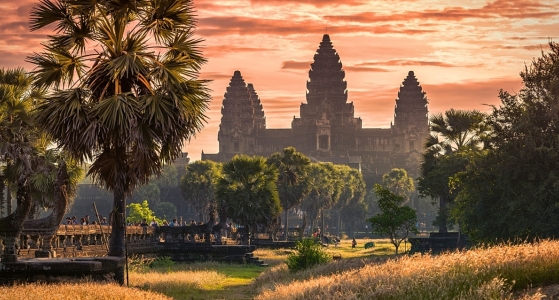
Siem Reap is the gateway to Cambodia’s vast and spectacular temples of Angkor undoubtedly one of the world's greatest archaeological sites. Constructed between the 9th and 15th centuries, these magnificent temples were once the grounds for the Khmer Empire’s capitals. The Angkor Archaeological Park covers around 400 sq km, and the largest, most well-known temple is Angkor Wat. The mysterious architectural techniques used to construct these temples still amaze the world today. Apart from the temples, one can take a Vespa ride and weave through the streets with a local guide on a street food tour. Head into the countryside for a cooking class, cycle or even ride a quad bike along the backroads, passing villages, paddy fields and taking in a more peaceful side to the city. Further afield is Southeast Asia’s largest freshwater lake - the Tonlé Sap. Cruise past the villages of stilt houses rising from the lake, such as Kampong Phluk town that soars above the water in the dry season and sits on top of the water in the rainy season. Welcoming 2.6 m tourists annually, Siem Reap is one of the biggest tourism hubs in Southeast Asia. From exploring ancient temples and floating villages to indulging in exquisite Khmer cuisine and relaxing in luxurious resorts, the town promises an unforgettable experience that blends cultural immersion with modern comforts.
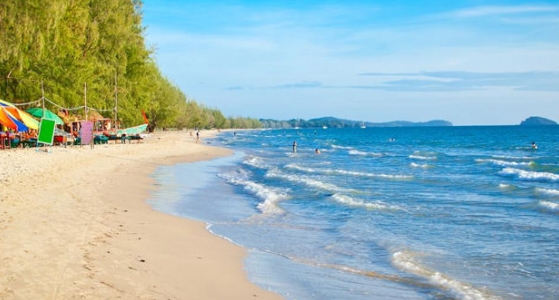
Sihanoukville, located on the southern coast of Cambodia, is bustling tourist attraction for those who seeking sun, sea, and sand. Known for its vast coastline, untouched as well as bustling beaches, the port town is a heaven for laidback time and water activities such as swimming, snorkeling, and diving. Sihanoukville also offers a vibrant nightlife scene with numerous beachfront bars and clubs. Additionally, the city is a jumping-off point to nearby breathtaking islands, including Koh Rong and Koh Rong Samloem, which are easily accessible by boat. Embark on an island-hopping adventure and discover the hidden gems that await you offshore. Visitors can also explore the Ream National Park, an area of outstanding natural beauty with mangrove forest and fine sandy beaches. Lace up your hiking boots and venture into this lush wilderness to discover its stunning viewpoints, cascading waterfalls, and serene rivers. Or travel by boat through the mysterious forests to witness the unique ecosystem thriving in these brackish waters and a variety of wildlife including macaques, gibbons, hornbills, and even elusive leopard cats.
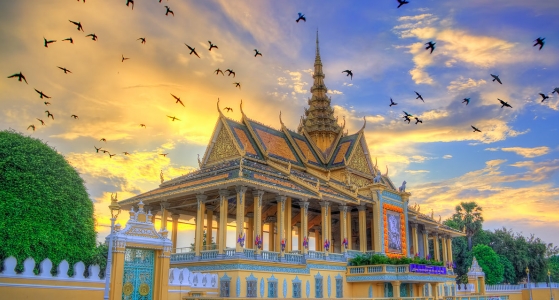
Phnom Penh is the most populous city in Cambodia and supposed to the most beautiful French built city in Asia. Abandoned during the Khmer Rouge period and with very little development until the 21st century, Phnom Penh has avoided the mass modern high rise development of other cities in the same area. The city maintains a unique vibrancy and provides a fascinating contrast between old and new. For many visitors, Phnom Penh is a transit stop before hopping on to Siem Reap, nevertheless, there are plenty of reasons to linger in the city. From the historical significant sites to understand what happened in Cambodia during the Khmer Rouge and Pol Pot years to the astounding temples and palaces to explore the classic Khmer architecture that make Phnom Penh an excellent location to spend a few days before heading into other parts of the country. Aside from sightseeing, Phnom Penh has a range of options for nightlife options and restaurants, including some great rooftop bars. There are a plethora of street stalls where you can fill up on noodle dishes, filled baguettes and fruit shakes. The bustling riverfront and Sisowath Quay are lined with cafés, restaurants and bars serving cuisine from all over the world. Boeung Keng Kang is also packed with swish cafes, restaurants and bars. The restaurants are reasonably priced, and many visitors end up lingering in Phnom Penh for the restaurant scene.
OTHER TOURS YOU MAY LIKE
Vietnam History & Heritage
Only From $1264/person
All Inclusive ServiceThis Tour
Exciting Singapore, Malaysia & Thailand Holiday
Only From $3048/person
All Inclusive ServiceThis Tour
Endless Beauty of Vietnam Malaysia and Indonesia
Only From $3960/person
All Inclusive ServiceThis Tour

Customize this tour with us!


Adventure Travel Trade Association


American Society of Travel Agents


Family Travel Association


TripAdvisor


Wikipedia


World Travel Awards
ABOUT US
Our storyTrusted Travel CompanyWhat Makes Us DifferentMeet Our TeamSoutheast Asia Travel GuideSoutheast Asia Tour HighlightsPre-departuresDeposit & PaymentCancellation PolicyTerms and ConditionsOur Destinations
Vietnam ToursCambodia ToursLaos ToursMyanmar ToursThailand ToursSingapore ToursIndonesia ToursMalaysia ToursPhilippines ToursWith over 15 years of experience in the tourism field, Southeast Asia Travel company has built a solid reputation as experts in designing custom tours across Southeast Asia: Vietnam, Laos, Cambodia, Thailand, Singapore, Malaysia, Indonesia, Myanmar, Philippines... Read more
